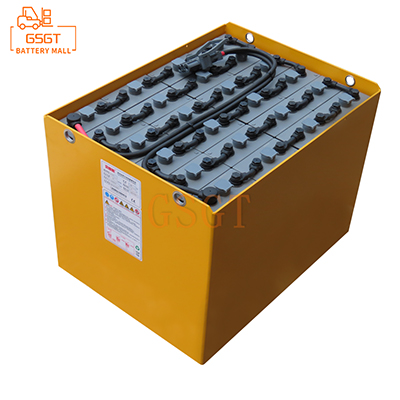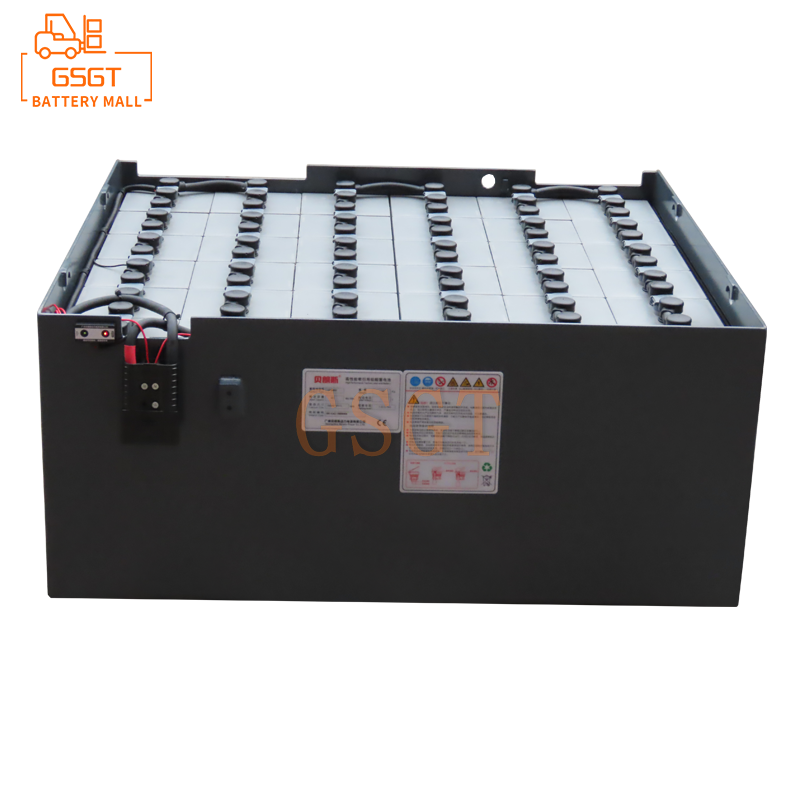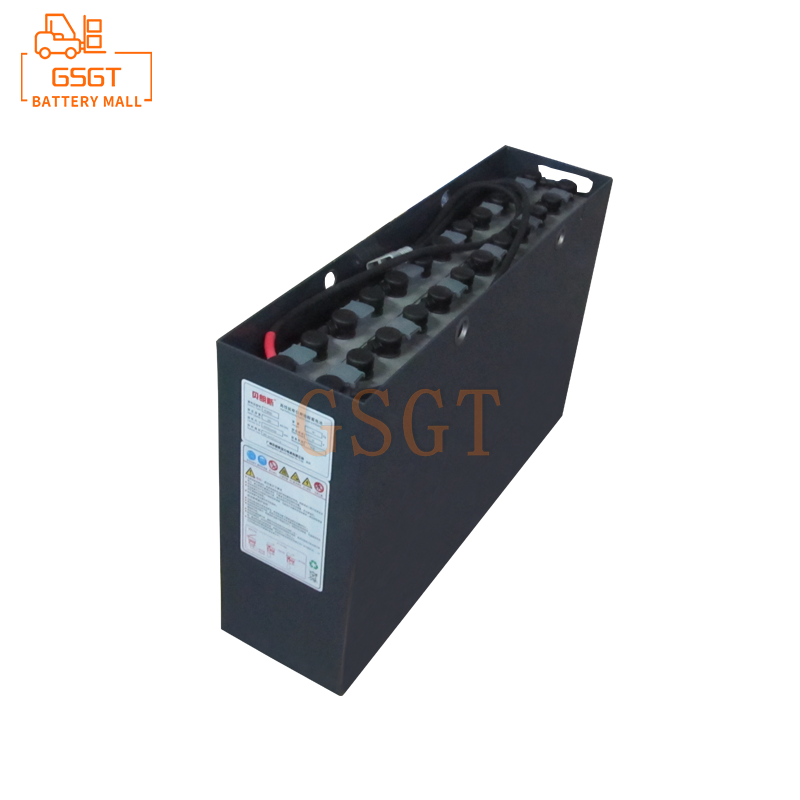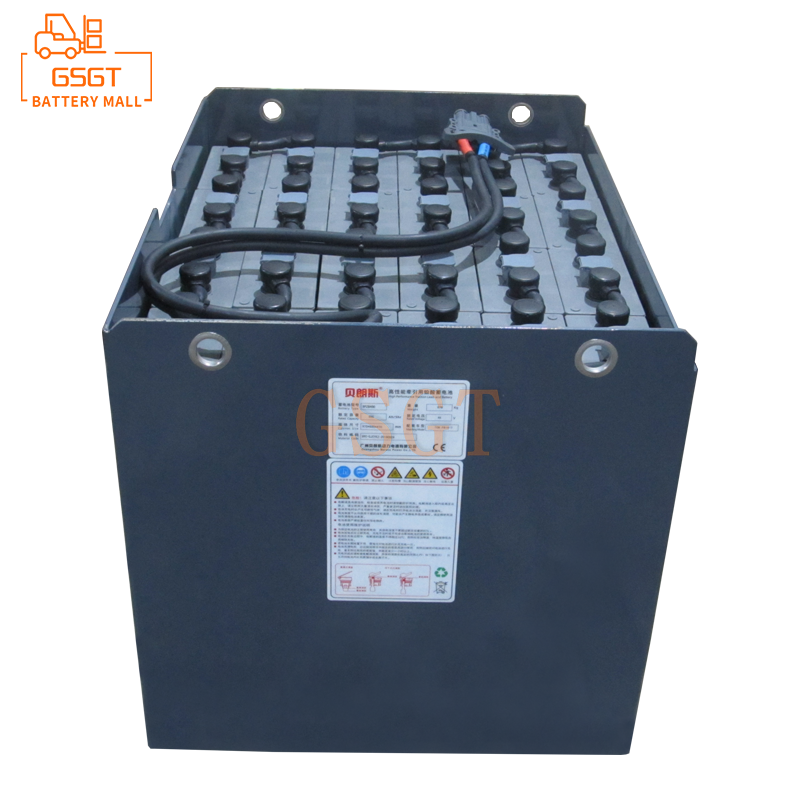Time:2025-05-06 11:52:14
Browse:631
In the field of modern logistics and industrial handling, forklifts, as indispensable key equipment, the selection of their power systems is of vital importance. Lead-acid batteries, with their numerous advantages, have stood out in the competition for forklift power sources and become a reliable power guarantee for forklifts.
The working principle of lead-acid batteries lays the foundation for them to become reliable power sources. Lead-acid batteries are mainly composed of positive plates, negative plates, separators, electrolyte and other components. During the discharge process, lead dioxide at the positive electrode and lead at the negative electrode undergo an electrochemical reaction under the action of sulfuric acid electrolyte, generating electrical energy and converting chemical energy into electrical energy for the operation of forklifts. When charging, the external power supply prompts this process to proceed in reverse, restoring the battery's power reserve. This stable and repeatable chemical reaction process provides a continuous and stable power output foundation for forklifts.
From the perspective of performance characteristics, lead-acid batteries have many advantages that meet the working requirements of forklifts. Firstly, it has a relatively high instantaneous discharge capacity. In daily work, forklifts frequently perform operations such as lifting and lowering goods, as well as moving the vehicle forward and backward. All these actions require a large amount of electrical energy supply within a short period of time. Lead-acid batteries can release a powerful current in an instant, meeting the requirements of the forklift hydraulic system for rapid lifting and lowering of goods as well as the rapid start and braking of the drive motor, ensuring that the forklift can efficiently complete various handling tasks. For instance, when rapidly moving heavy goods in a warehouse, lead-acid batteries can quickly provide sufficient power, enabling forklifts to quickly lift the goods to the required height and smoothly reach the designated position.
Secondly, the output voltage of lead-acid batteries is stable. The control system, lighting system and various electronic devices of forklifts all require a stable voltage to operate normally. During the discharge process, lead-acid batteries can maintain a relatively stable voltage output, ensuring the stable operation of all equipment in forklifts and preventing malfunctions due to voltage fluctuations. This is crucial for the accurate operation and safe running of forklifts in complex working environments.
Thirdly, its cost is relatively low. Compared with other types of batteries, such as lithium batteries, lead-acid batteries have mature production technology, abundant raw materials and relatively low prices, which gives lead-acid batteries a significant advantage in the initial purchase cost. For many enterprises, especially small and medium-sized ones that are sensitive to costs, the lower purchase cost lowers the capital threshold for introducing forklifts, which is conducive to expanding the scale of equipment and improving the efficiency of logistics handling.
In practical applications, the reliability of lead-acid batteries is also reflected in their good environmental adaptability. Lead-acid batteries can operate normally within a wide temperature range. Although its performance will decline in extremely low-temperature environments, by taking appropriate insulation measures, such as installing battery insulation boxes, it can still meet the working requirements of forklifts in cold conditions. In high-temperature environments, as long as proper heat dissipation and monitoring and replenishment of the electrolyte are carried out, lead-acid batteries can also operate stably. In addition, lead-acid batteries also have a certain tolerance for harsh working environments such as dust and vibration, which enables them to meet the operation requirements of forklifts in various complex environments such as factory workshops, warehouses, and ports.
The maintenance and care of lead-acid batteries are also relatively simple, which further enhances their status as a reliable power source for forklifts. In daily use, it is only necessary to regularly check the liquid level of the electrolyte and add distilled water or special lead-acid battery replenishment fluid as needed to keep the concentration of the electrolyte within the normal range. Meanwhile, regularly inspect the battery terminals to prevent corrosion and poor contact, and clean and maintain them in a timely manner. In addition, charging the battery according to the correct charging process and avoiding overcharging and overdischarging can effectively extend the service life of lead-acid batteries. This simple and feasible maintenance method enables enterprises to avoid investing too many professional technicians and equipment, reducing maintenance costs and difficulty, and improving the efficiency and reliability of forklifts.
The well-developed recycling and utilization system of lead-acid batteries is also one of the important factors for them to become a reliable power source for forklifts. With the continuous improvement of environmental awareness, the recycling and treatment of batteries have become the focus of attention. Lead-acid batteries are among the batteries with the highest recycling rate at present. Their recycling technology is mature and the recycling system is complete. Through professional recycling channels, raw materials such as lead and sulfuric acid in lead-acid batteries can be effectively recycled and reused. This not only reduces environmental pollution but also lowers resource waste, achieving the recycling of resources. For enterprises, after the service life of lead-acid batteries comes to an end, there is no need to worry about their disposal. At the same time, it also meets the environmental protection responsibility requirements of enterprises, further enhancing their confidence in lead-acid batteries as the power source for forklifts.
However, lead-acid batteries are not perfect and also face some challenges. For instance, its energy density is relatively low, which limits the battery's endurance and requires frequent charging. To some extent, this affects the continuous working time of the forklift. In addition, the charging time of lead-acid batteries is relatively long, usually taking several hours to fully charge. This may affect the operational efficiency during the peak usage period of forklifts. To address these issues, on the one hand, enterprises can reduce equipment downtime caused by charging by equipping multiple sets of batteries and adopting battery replacement methods. On the other hand, researchers are constantly exploring new technologies and materials, dedicated to enhancing the energy density and charging speed of lead-acid batteries and further improving their performance.
Lead-acid batteries have become a reliable power source for forklifts due to their unique working principle, superior performance characteristics, good environmental adaptability, simple maintenance and a complete recycling system, among other advantages. Despite some challenges, with the continuous advancement of technology and the accumulation of application experience, lead-acid batteries will still play an important role in the power field of forklifts and constantly adapt to the demands of industry development, providing solid power support for the development of modern logistics and industrial handling industries.

$3405

$4045

$1060

$3130

MESSAGE
Professional And Efficient
Security
Affordable Price
Professional Services